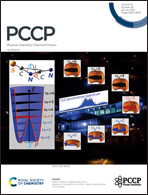Understanding photochemical pathways of laser-induced metal ion reduction through byproduct analysis†
Abstract
Laser-induced reduction of metal ions is attracting increasing attention as a sustainable route to ligand-free metal nanoparticles. In this work, we investigate the photochemical reactions involved in reduction of Ag+ and [AuCl4]− upon interaction with lasers with nanosecond and femtosecond pulse duration, using strong-field ionization mass spectrometry and spectroscopic assays to identify stable molecular byproducts. Whereas Ag+ in aqueous isopropyl alcohol (IPA) is reduced through plasma-mediated mechanisms upon femtosecond laser excitation, low-fluence nanosecond laser excitation induces electron transfer from IPA to Ag+. Both nanosecond and femtosecond laser excitation of aqueous [AuCl4]− produce reactive chlorine species by Au–Cl bond homolysis. Formation of numerous volatile products by IPA decomposition during both femtosecond and nanosecond laser excitation of [AuCl4]− is attributed to enhanced optical breakdown by the Au nanoparticle products of [AuCl4]− reduction. These mechanistic insights can inform the design of laser synthesis procedures to improve control over metal nanoparticle properties and enhance byproduct yields.



 Please wait while we load your content...
Please wait while we load your content...